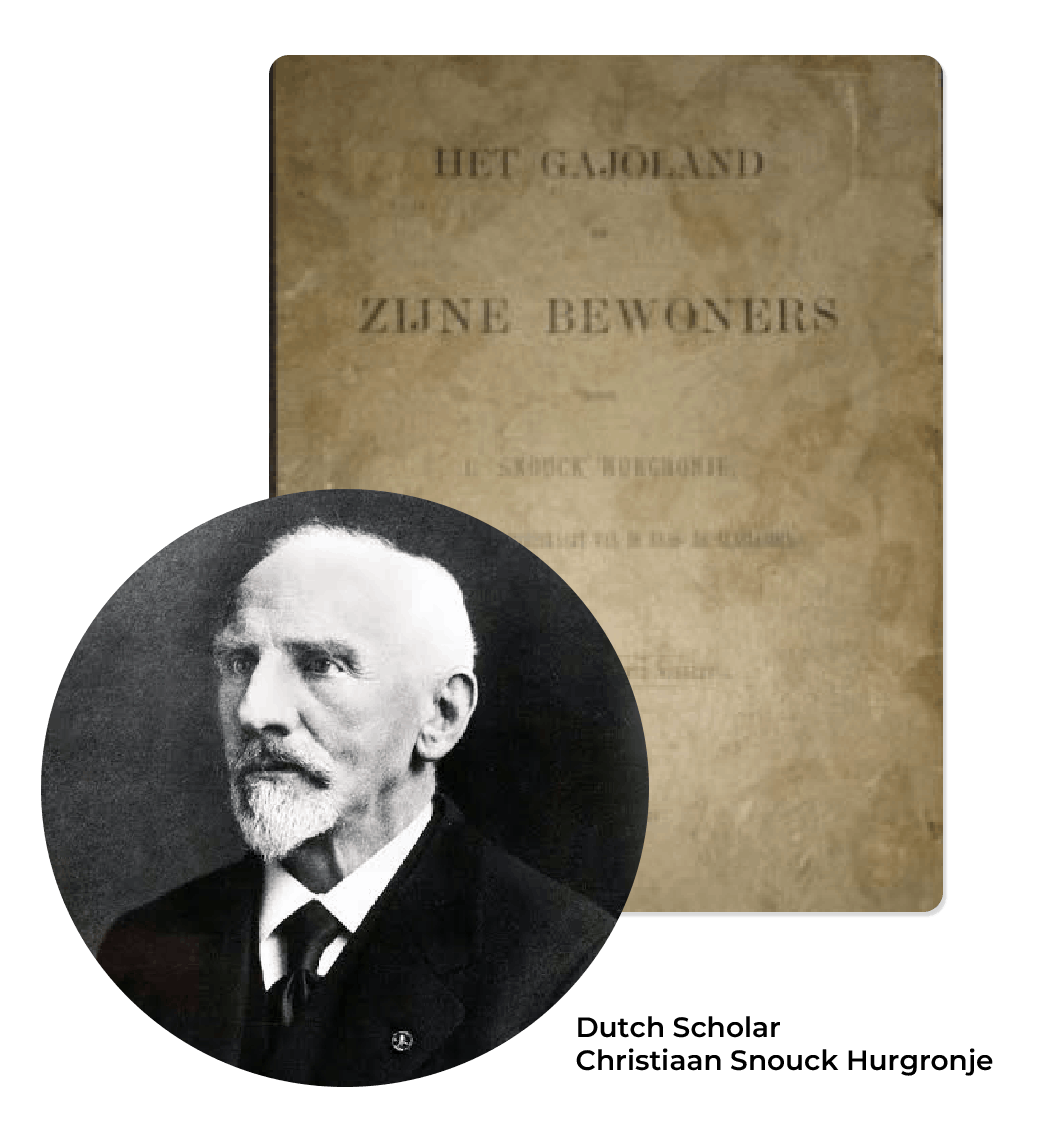Menu
About Us
From Tree-To Cup
Our Story
Our Story
DEGAYO COFFEE has a rich family history that dates back to the 1920s. Our founder’s forefather found the coffee farm at Gayo Highlands, where his ancestors cultivated coffee plants for generations. The coffee plantation has contributed to the cultural value of the area by using traditional methods in order to maintain and sustain local farmers’ culture.






Gayo highlands
Our History
In 1887 the Dutch explorer SNOUCK HURGRONJE requested the permission to do exploratory fieldwork through rural Aceh from the then Dutch Colonial Administration in Batavia. Although the administration find it too dangerous because of the severe resistant from Acehnese rebels towards Dutch Colonial Present in Aceh at that time, eventually Batavia granted him the permission.
In his book “HET GAJOLAND EN ZIJNE BEWONERS” (THE GAYO LAND AND ITS INHABITANTS) published in 1903, he reported finding a species of coffee plants in almost every village in Gayo.The local population did not know the origins of the plant and how it arrived on Gayo Land, but said it grew in the wild. The Gayonese at that time used the plants as fences around their gardens.
It is possible that the plant was brought to Aceh by the Arabs, who were one of the first nations to commercialize coffee. The Arab influence in Aceh dated back to 1297 AD, during the spreading of Islam throughout South East Asia with Aceh’s SAMUDERA PASAI KINGDOM (150 km from Takengon).
The first Dutch expedition to Aceh was in 1873 led by General KOHLER who was killed by the Acehnese on the first attempt to take control of the capital Banda Aceh.

The History Of The Pure Nature Of Acheh Tengah
Gayo Highland
The Gayo Highland, situated within the buffer zone of Leuser National Park (the oldest and largest in Indonesia), consist of mountainous terrain with elevations ranging from 1000 meters to over 3000 meters.
It consists of the mountainous central part of Aceh, an isolated area which is cut off from the surrounding coastal plains by the rough peaks of Bukit Barisan.
This is the habitat of about 250,000 Gayo, a dynamic population with an own language, lively traditional art and a high level of education.
Laut Tawar
Laut Tawar, a tectonic lake located in the centre of the highlands, at an elevation of 1200 meters, contributes to this unique microclimate.
The evident of volcanic soil makes it fertile and possible for the cultivation of organic coffee plants. The area around Danau Tawar (Lake Tawar) in the north is the most heavily populated, especially around the most important city of Takengon.
Takengon is the capital of Central Aceh district. It sits to offer you a handful of rareness you must see.
Degayo Coffee
Coffee from this region is most commonly produced using a semi-washed or “wet-hulled” method.
This involves removing the skin of the coffee cherry and allowing the seed to dry within the mucilage.
Typically, this yields coffee with strong body which is aromatic and earthy. It’s easy to see why it is having such a strong following.

Ketambe Rainforest
Sumatera protected rainforest (Leuser National Park) is the 2nd largest protected tropical rainforest after Amazon. Its is a part of a unique and little-explored ecosystem, which corresponds to the jungle territory of middle Acheh.
The natural isolation of the Nusantara ecoregion for several thousands of years produced unique animal and plant species which present unique characteristics. The place consists of 2,500,000 hectares of Acheh’s jungle with a lot of endemic species.The geographical isolation of this region allowed the development of Orang Utan, proboscis monkey, sun bear, clouded leopard, and flying fox bat, and endangered animals.